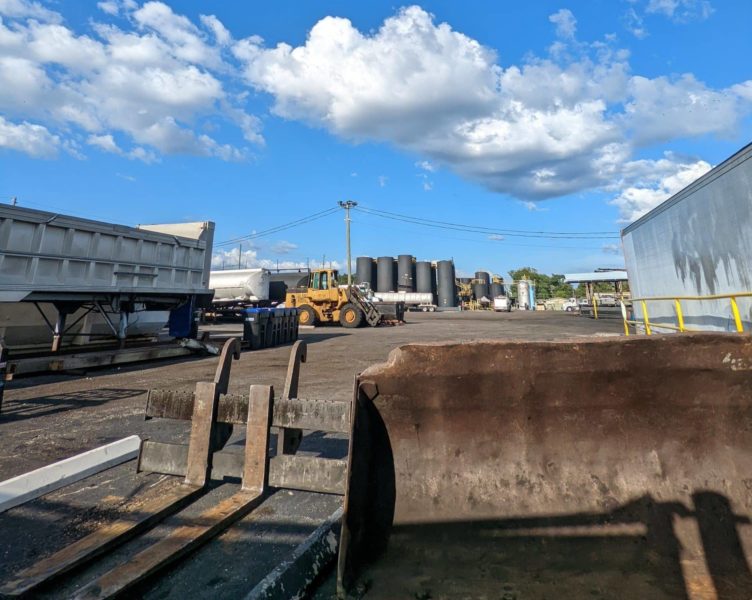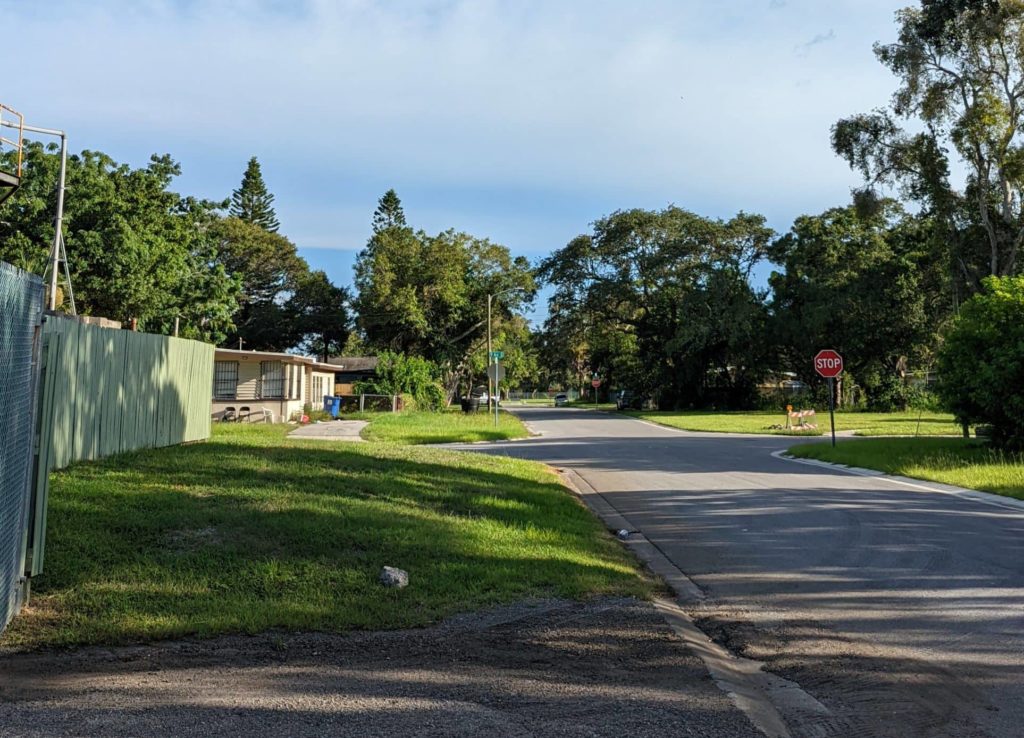Thrive
Report details noxious odors in Childs Park

For decades, residents and community leaders in Childs Park have voiced concerns over the pungent odors emanating from a cluster of industrial sites in the neighborhood.
While St. Petersburg is not known as an industrial city, a several plants sit adjacent to several homes in the predominantly Black and low-income neighborhood of Childs Park on the city’s Southside. The Howco Environmental Services oil recycling plant is just a couple of blocks from the local recreation center, its splash pad and basketball courts. Residents have long complained of headaches or being forced indoors due to noxious odors in the area.
Led by the Foundation for a Healthy St. Pete (FHSP), the city’s office of sustainability and several community organizations came together for a three-year initiative to address environmental and health concerns in Childs Park. Although lacking some critical concrete data, the result was a sprawling 167-page report with supporting documents. Sharon Wright, St. Petersburg’s sustainability manager, led a presentation to city council members during Thursday’s Health, Energy, Resiliency and Sustainability Committee meeting.
“We went into deep detail about environmental health and air quality and what the different things mean,” said Wright. “And I think even having that kind of understanding helps everyone kind of work on the issues together, knowing that it’s a complex problem.
“So, this is not just a ‘hey, turn that thing off, and the odor goes away.'”

Houses sit just across the street from the Howco plant.
According to the report, a 1995 “neighborhood profile” noted land use and urban design problems. These included “several locations where industrial and residential uses are adjacent without buffer” and “the separation of industrial/commercial areas requires improvement to upgrade the visual quality of the neighborhood.”
The report states that 6,496 people live in Childs Park, and 76.5% are Black.
A 2007 Greater Childs Park Area Strategic Plan reiterated that the industrial plants lack adequate buffering to adjacent single-family residential units and pose “a health and safety hazard to the neighborhood, leading to a deterioration of visual character and a significant decline in property values.”
“The Howco Environmental Oil Recovery Facility, located on 8th Avenue South, is one such example identified by the community during the workshops as a detrimental use situated in the midst of residential homes,” read the report.
The report stemmed from a scope of work and agreement signed by the city, FHSP and the neighborhood association president in 2019. Together, they created the Neighborhood Resilience Collective (NRC): Child Park Pilot.
However, Wright noted that Pinellas County’s Air Quality Division oversees industrial wastewater and air pollution investigations, typically through complaints rather than proactive testing. That leaves the city little environmental regulatory power.
“When there’s a complaint or an odor smell, it’s a little bit hard to figure out how to even report it,” said Wright. “I even had some difficulty – I clicked the wrong button, and it asked me for my driver’s license … Saying all that, the county has come out, and they’ve been working with the neighborhood on this, and there is a phone number.”
She said the two “high-tech” air monitors the county deploys in St. Pete are not near Childs Park. Wright added that the devices are expensive, at $50-60,000 each. The U.S. Department of Environmental Protection provided funding for the monitors.
With the help of University of South Florida researchers, the campaign involved installing three less expensive air monitoring devices around Childs Park.
The NRC’s simplified “Smell Something, Say Something” initiative recorded 45 complaints from April to July. The most common issues were a fuel or oil odor, with 25 separate reports. While the campaign did not include “gas” as a reportable option, residents filled it in under the “other” 10 times.
Of the 45 complaints in three months, residents listed 33 as “strong” odors, and nine were “moderate.”

The Childs Park recreational center, at 4301 13th Ave. S., is just a couple of blocks away from the Howco plant.
The report identified 31 industrial businesses that operate within Childs Park’s boundaries. Of those, 29 sit along the Pinellas Trail, a former railway. Six possess industrial wastewater discharge permits, and five have air operation permits.
Wright, who noted several times that she is not an air quality specialist, said a preliminary analysis of the report is inconclusive regarding whether the industrial plants are emitting pollutants that are harmful to health.
“You may smell an odor, and it may be particulate matter that’s not harmful to your health,” explained Wright. “But it’s an everyday nuisance or an objectionable odor, so it’s affecting your everyday life.”
She added that the noxious odors could have multiple causes and require further investigation to pinpoint the source. Investigators, said Wright, must then determine if a particular business is permitted to release specific “elements or chemicals” into the air.
While the report stated that facilities with air operation and wastewater discharge permits are “somewhat evenly distributed” throughout the city, there is a higher concentration around Childs Park. It also noted that those industrial sites are “not likely directly adjacent to residents.”
The city needs to enlist the help of an environmental consulting firm and conduct more testing, said Wright, but funding is an issue. The organizations spent $165,000 on the initiative, and she said an air quality analysis alone would cost another $150-$250,000.
“It seems that you’ve gone pretty far with just the resources and knowledge that you have,” said Council Chair Gina Driscoll. “It seems that this would be the county’s responsibility … if they’re the enforcers, they need to know what to enforce.”
Wright said that county staff – and Howco – have come to meetings in the neighborhood and shown a desire to work on mitigating the problem. She added that the office of sustainability would continue working with community partners and the county to ascertain the scope of work and funding needed to complete the investigation and present the findings to city council in the coming months.
“This is something that is frustrating for everyone – for us, for the residents – that this problem lingers,” said Driscoll. “I can’t help but think that at one point, in Flint, Michigan, there was a time where people just said, ‘why does the water taste funny?’
“So, I want to get on top of this.”
Residents can file an outdoor air quality complaint through the Pinellas County Citizen Access Portal. You can also report foul odors by calling (727) 464-4422.
View the full report here.








Mark Parker
September 10, 2022at8:53 pm
Need to go a lot further. https://stpetecatalyst.com/how-should-st-pete-spend-oil-spill-funding/amp/
Shirley Hayes
August 6, 2022at6:27 pm
And here we go!!!!!!